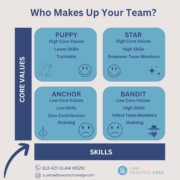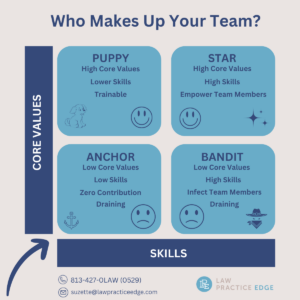Building a Strong Employer Brand for Your Law Firm
In an increasingly competitive legal industry, attracting top talent requires more than just offering competitive salaries and benefits. Today, potential recruits are looking for firms that stand out not only for their legal prowess but also for their culture, values, and opportunities for growth. This is where the power of a strong employer brand becomes evident. An effective employer brand can differentiate your law firm, attract high-caliber candidates, and ultimately contribute to your firm’s success and reputation.
The Importance of Employer Branding
Employer branding is the process of promoting a company – in this case, a law firm – as the employer of choice to a desired target group, one that a company needs and wants to recruit and retain. The right employer brand communicates what makes your firm unique and why it’s a great place to work. It encompasses everything from your firm’s culture and values to career development opportunities and work-life balance initiatives.
A strong employer brand can help your law firm in several ways:
- Attracting Top Talent: Talented lawyers have their pick of places to work, so a strong employer brand that resonates with their values and career aspirations can make your firm stand out.
- Reducing Hiring Costs: A strong brand can reduce the need for extensive recruitment efforts by making potential candidates more likely to seek out your firm directly.
- Enhancing Retention: When employees feel aligned with their employer’s brand and values, they’re more likely to stay, reducing turnover and fostering a stable, experienced workforce.
Strategies for Building and Communicating Your Employer Brand
Define What Makes Your Firm Unique
Start by identifying the unique aspects of your firm’s culture, mission, and values. What makes your firm a great place to work? This might include your firm’s commitment to diversity and inclusion, innovative work practices, or community involvement.
Create a Value Proposition
Develop a clear employee value proposition (EVP) that outlines what employees can expect from working at your firm and what you expect from them. Your EVP should be compelling, setting you apart from other firms and resonating with the kind of talent you want to attract.
Showcase Your Brand Across Multiple Channels
Leverage your website, social media, job postings, and professional networks to communicate your employer brand. Share stories and testimonials from current employees about their experiences and achievements at your firm. Highlight your firm’s involvement in groundbreaking cases, community service, or work-life balance initiatives.
Engage Your Current Employees
Your current employees are your best brand ambassadors. Encourage them to share their work experiences on their personal and professional social media accounts. This not only amplifies your brand but also adds authenticity to your messaging. Encourage cross-promotion of social posts among your employees.
Continuously Monitor and Adapt Your Branding Efforts
Employer branding is not a set-it-and-forget-it task. Regularly seek feedback from employees and job candidates about how your firm is perceived as an employer and be prepared to adapt your strategies accordingly.
How We Can Help
We understand the unique challenges and opportunities within the legal industry and can offer tailored solutions that resonate with high-caliber legal talent. Here’s how we can assist:
- Brand Assessment: We’ll conduct an in-depth analysis of your current employer brand, including how it’s perceived internally and externally.
- Strategy Development: Based on this assessment, we’ll develop a comprehensive employer branding strategy that aligns with your firm’s goals and values.
- Implementation Support: We can assist with implementing your branding strategy across various channels, ensuring a consistent and compelling message is communicated.
- Training and Workshops: We offer training for your HR team and leadership on best practices for employer branding and employee engagement.
Building a strong employer brand is essential for attracting and retaining the top legal talent necessary for your law firm’s success. With our expertise, your firm can establish itself as a preferred employer, attracting professionals who are not only highly skilled but also a great fit for your culture and values. Let us help you create an employer brand that sets you apart and makes your firm the place top talent aspires to be.











